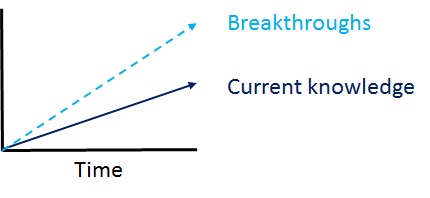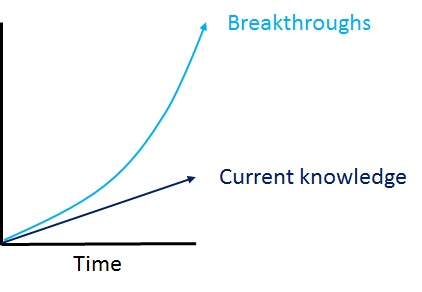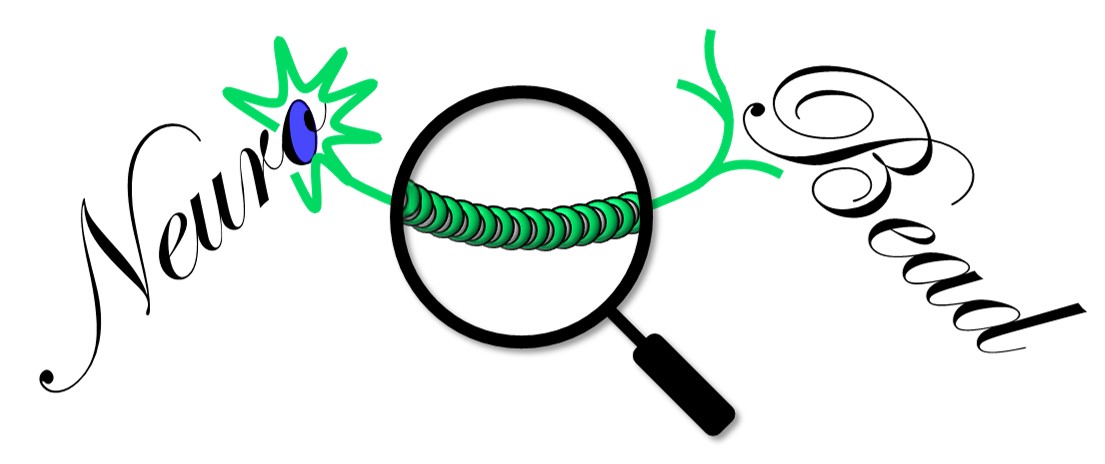In my previous post I have referred to Laura Vanderkam’s book “168 Hours”. One of the chapters is called “Anatomy of a Breakthrough”. It begins by telling a story about a woman, Leah Ingram, who wanted to publish a book, and succeeded by what appeared to be a string of lucky coincidences. Only that wasn’t really true. Achieving a breakthrough in anything takes a lot of time, effort and devotion. According to studies by K. Anders Ericsson, it takes 10,000 hours of deliberate practice to truly master a skill. While publishing a book may not take as long as, for example, becoming a world champion in chess; it took Ingram over a year of publishing her blog 5 days a week to get noticed by a reporter. That served as the tipping point for her book to get published.
In science, achieving a breakthrough is even more difficult. But people do it. Today, the Nobel Prize in Physiology and Medicine was awarded to Yoshinori Ohsumi, for delineating the mechanisms of autophagy. Autophagy is a mechanism by which the body can degrade used and unwanted materials in a process, that when translated from Greek means “self eating”. The mechanism is evolutionarily conserved from yeast to humans and is necessary for normal homeostasis. Defects in this process can lead to disorders, such as Parkinson’s disease and cancer, and are often associated with aging. While Ohsumi may not have been the first to discover autophagy, but his groundbreaking work established and characterized the key genes involved in this process.
So what does it take to achieve a breakthrough? Unfortunately, by definition it often means going “against the grain” and attempting to put long standing dogmas into question. There are countless examples, ranging from Galileo Galilei to Gregor Mendel, of scientists whose radical ideas were only acknowledged long after their death.
I often picture a theoretical graph that looks something like this:

In other words, is there a certain fixed proportion of currently available knowledge (and technology) to what would be considered a modern day breakthrough? If you compare the available resources at the time, are current publications in Science and Nature journals roughly equivalent to Isaac Newton establishing the laws of physics based on an apple falling on his head? Or is there an exponential growth of question complexity relative to the resources at hand? How much more difficult is it to get to a breakthrough despite the explosion of knowledge?


Your blog is perfection. You are doing the most incredible job of making texts about science so easy to read. Keep the good work.
LikeLike
Thank you! I have followed you as well. Sometimes being a realist leaves me wishing for some more positive views of life. 🙂
LikeLike
Can I simply say what a relief to seek out someone who really is aware of what theyre talking about on the internet. You positively know how to deliver a problem to gentle and make it important. Extra individuals have to read this and understand this facet of the story. I cant imagine youre not more well-liked since you definitely have the gift.
LikeLike
Hi, so sorry that I missed your comment earlier. Thank you so much for your positive feedback. Please check out some of my more recent posts, where I try to delineate the relationship between art and science, and share with your friends if you think they are worth reading!
LikeLike